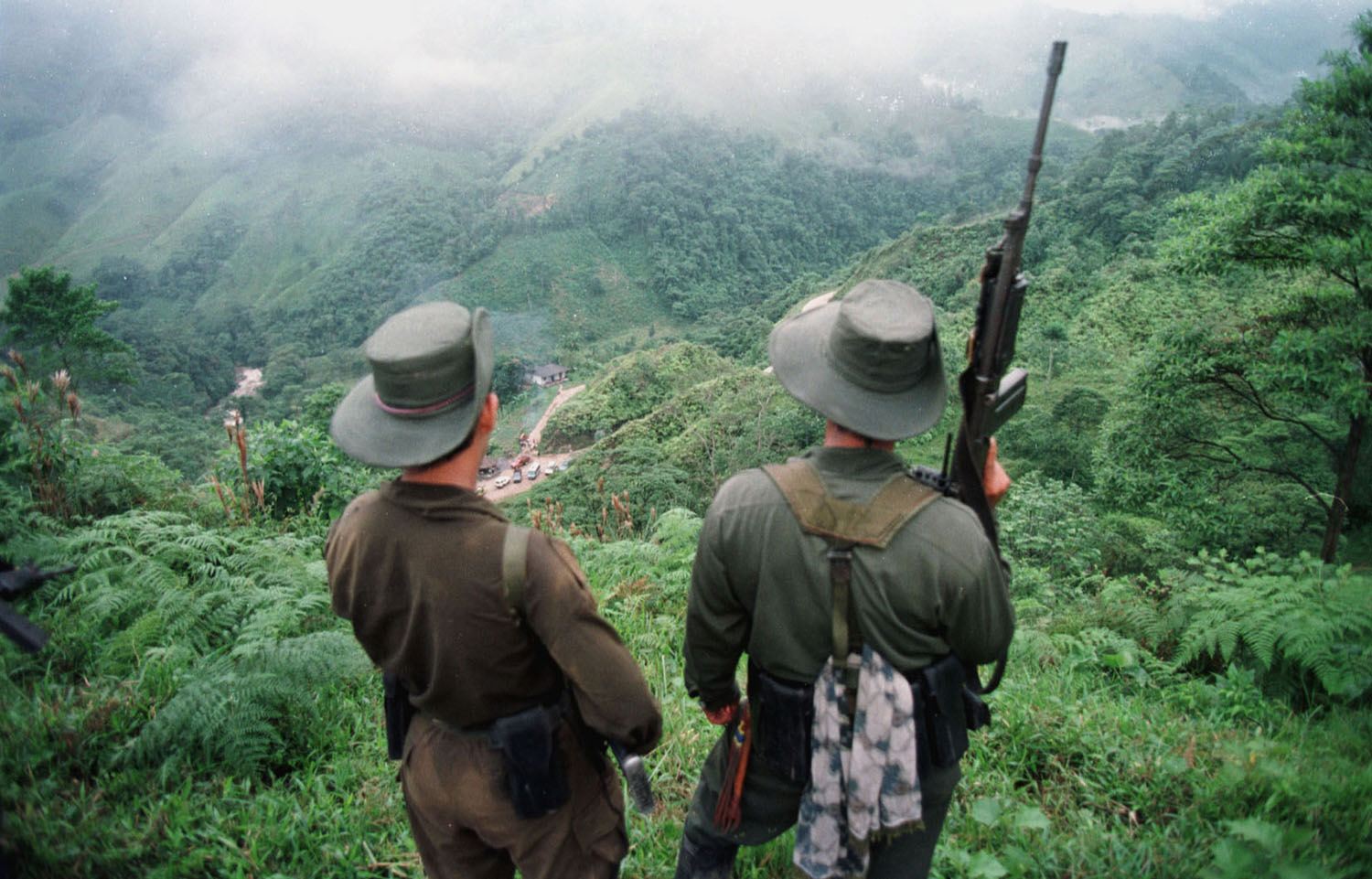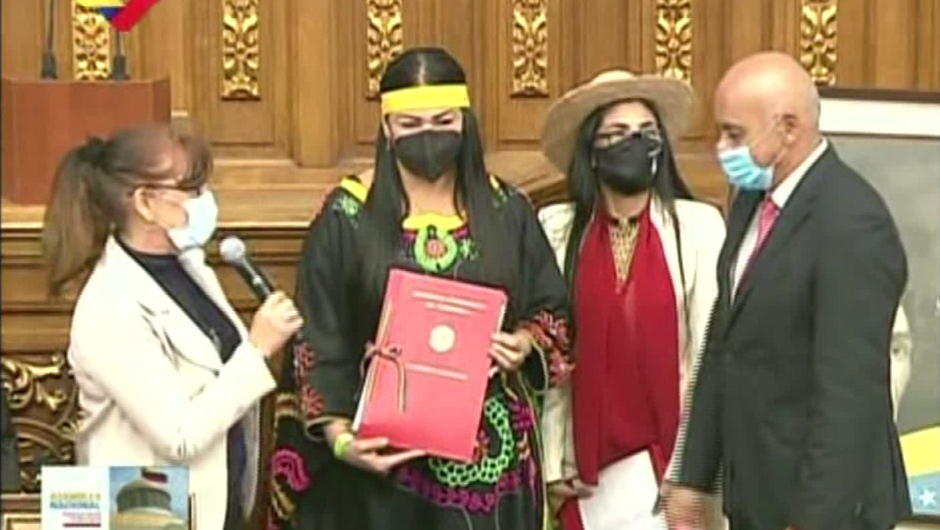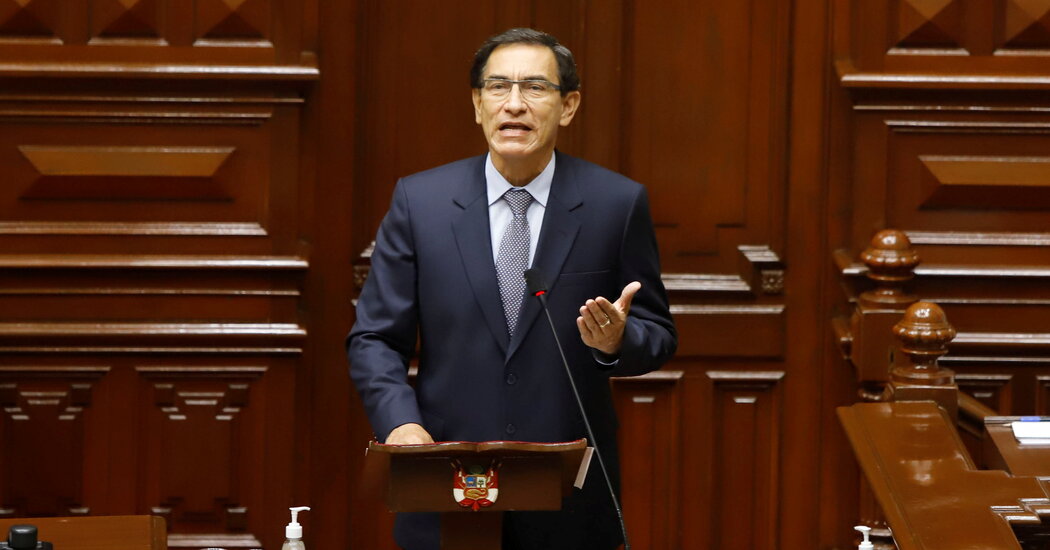Since late March, battle-tested Revolutionary Armed Forces of Colombia (FARC) combatants have defied Venezuela and knocked its military on its heels. There are two important lessons to draw from these recent armed clashes between FARC fighters and Venezuelan armed forces on the border with Colombia. One lesson is for the Maduro regime and the other for those who have expressed interest in replacing it.
Ironically, both Venezuelan parties are prone to underestimating the FARC, a lesson that was hard learned on the Colombian side of the border. The armed encounters have served as an abrupt wake-up call for Nicolás Maduro and his supporters. Violent clashes have continued into a second month, underscoring that the regime was caught off-balance.
The Venezuelan regime was first surprised at the realization that it does not really control its own national territory. The truth is, the central government has not exercised full authority in the border region with Colombia for a long, long time, although the situation has worsened under the rule of Hugo Chávez and later Maduro. Over time, FARC—and the National Liberation Army (ELN) and others—have displaced and replaced the local population in these areas, often with a nod from the Venezuelan regime. In fact, today the irregulars and the locals are often one and the same. The real outsiders in this story have turned out to be the Venezuelan military that, as of late March, intruded in the area and immediately employed violence. The home advantage, however, has gone to the better trained, prepared, and battle-hardened insurgents, transplanted residents who in defense of their adopted territory have shown greater resilience than the Venezuelan forces sent to deal with them.
Had the Venezuelan forces done their homework, they would have also realized that the FARC forces they were up against, the 10th Front led by Commander Gentil Duarte, were neither recidivist nor truly so-called dissidents. They never really pledged to follow the Colombian peace process, never put down their arms, nor renounced the use of violence. In fact, the 10th Front continued to do what it has always done since years ago when they first deployed to this corner of Venezuela: secure a safe haven within Venezuelan territory from where they could oversee a lucrative cocaine trafficking corridor. The ease with which the Venezuelan forces fell to FARC landmines served as a stark reminder that FARC are really on home soil. The Venezuelan regime was caught unprepared to deal with the terrible effectiveness of these anti-personnel devices, especially in the hands of professionals determined to protect their own camps, trails, and safe areas. To the insurgents’ benefit, the Venezuelan regime repeated a common mistake: they chose to counter a classic guerrilla adversary with conventional warfare methods. That story rarely ends well for the state.
So, on the border, the Venezuelan armed forces encountered unexpected resistance that has handed them repeated setbacks and mounting casualties. The regime has not had the usual opportunity to showcase captured or dead enemy next to the obligatory piles (or, conversely, carefully arranged rows) of war materiel taken off the battlefield. Instead, the official images offered so far look especially unconvincing in their composition and display. What we do see are the smoldering remains and rubble littered results of insurgent hit-and-run operations, ambushes, and blown-up government installations. Most recently, we see too many Venezuelan military casualties strewn on the battlefield. The guerrillas hit here and there at the regime’s weak spots, meld back into the population or the nearby jungle, as practiced guerrillas so expertly do.
In response, the Venezuelan military appears to have been mobilizing any troops on hand, regardless of their suitability. Among those who have been called up for duty are the inept territorial militias. They have been spared actual combat deployment, thankfully. Also called in, if a little late, are the professional soldiers and marines. These, along with army special forces, stand in clear contrast to the deputized Special Action Forces (FAES) of the Bolivarian National Police that were sent in early. The FAES not surprisingly soon after their deployment proved they were unprepared to confront a properly armed foe. Spotted were even Russian-built Hind attack helicopters apparently playing an elusive cat-and-mouse game, one that an experienced FARC 10th Front has had a few decades to perfect. In short, the Venezuelan military has lost men, vehicles, pride, and the initiative, and have precious little to show for their strained efforts.
Today, the regime is worried. Nervous and defeated, expect the regime to have hastily called on their Russian military advisers and redirected any Wagner guns-for-hire to jump into the fray. So, left initially with a bloody nose and a bruised ego, and then rather quickly with several casualties among their officer corps, the Venezuelan military is pained and humiliated. They have also started to question their own leadership. Why so unprepared, and why the poor strategic and tactical decisions? Why the high number of casualties? Why the needless sacrifices? In any case, the military clearly failed at whatever it was they set out to prove by taking on the FARC 10th Front.
In a display of false bravado, the regime forces will now likely remain in the operational area for a while longer, feigning confidence and making largely conservative, prudent, and safe moves. They will avoid further clashes if they can. If not, they will add to their losses. And, if they are smart, will take lessons back to the drawing board where they will be best advised to study them. They will be particularly anxious to return to the calming ignorance of the status quo ante, where coexistence, denial, and cooperation, not to mention turning a blind eye, were the order of the day. The next time the Venezuelan military is called to address armed violence in a disputed area, they can be expected to approach the mission soberly and with greater caution. Otherwise, they will be handed another lesson in unconventional warfare courtesy of illegally armed groups in the area.
The Opposition
Now, there is also a powerful lesson for those opposed to Maduro. When discussing post-regime security challenges—a topic that receives insufficient attention—anti-Maduro political forces too casually comment that the FARC and ELN problem can be solved simply by working closer with the Colombian and U.S. governments. That’s it. The United States and Colombia will help Venezuela rid itself of this threat, goes the belief.
But of course, it is easier said than done. Absent any additional details or context, it seems this serious problem has received little attention from opposition figures, even those few with some limited security experience. It makes it all seem that a lack of want is all that stands between Venezuela and an insurgent-free border. Moreover, it betrays frightening naiveté. The opposition seems to have a general notion of FARC and ELN presence (and at times boasts better information on ELN territorial expansion), leading them to naturally place these groups toward the very top of their notional list of future security priorities. Yet, there are few indications that serious thought has been given to what needs to be done to counter these threats. Defeating FARC and the ELN militarily or pushing them back over the border into Colombia somehow seems to be as far as the logic goes. In the absence of specifics or lacking evidence of good planning or a strategy of any kind, all that is left then is simply an expression or desire—an aspiration.
The ELN and FARC are quite good at what they do. These insurgents have operated and occupied camps in Venezuela for decades; some members have lived there their whole lives. These guerrilla strongholds in some cases predate Chavismo by up to a generation. FARC and ELN camps in Venezuela include family units comprised of entrenched populations with everything that that implies. Their presence has had a chance over time to metastasize. The ELN did it first and best, but the FARC learned quickly. Given this, it will take more than good intentions, enthusiasm, and wishful thinking to fix the problem.
The recent armed clashes along the border serve to remind everyone that the challenge posed by Colombian guerrilla groups operating in Venezuela is complicated and difficult. There is no doubt a solution will remain elusive, especially when the other dozen or so, at times greater, challenges facing the country are added to the equation. Thus, importantly, the approach to resolve it must be cogent, methodical, and reasoned. It should also be the result of a thoughtful, studied process that right-sizes the threat and then approaches it based on something more solid than what has been offered to date.
The Venezuelan military have been set up most recently for failure by its political masters. The age-old scoreboard shows that when it has come to violent encounters with Colombian armed guerrillas, the results are distressing for government forces. The Colombian insurgent presence in border states has been the top security challenge for the Venezuelan military and the civilian government going back to the 1980s, when significant resources, attention, and skilled military professionals were put on the problem. Even then, despite this special attention paid by a Venezuelan military force arguably better trained, motivated, and prepared than today’s, prior governments also struggled to tally successes. This is yet another reminder that taming the insurgent problem is difficult and will require an approach that goes beyond just strictly a military one. It certainly will take a more deliberate effort to bring the problem under control based on refined planning and lots of hard work.
The problem on the border requires a blended, whole-of-government approach. A solid strategy will marry effective and well-executed counterinsurgency and counternarcotic tactics with significant central government engagement in other forms. Any government will have to provide basic needs to the local population, regardless of its makeup or nationality. Paramount is reliable access to clean drinking water, more and better schools, basic health services, reliable sources of power, and security against the myriad of border ruffians—not just the guerrillas—who threaten the lives of locals and take their few belongings. Improved infrastructure and greater state attention will help mitigate the effects of some of the root causes of instability and should respond to a concerted development strategy. Much-needed job opportunities must follow. In the end, these are generally remote areas with few options for those who do not take up illegal activity. These regions scream for a government that does more than shake them down, let them down, forget about them, and bomb them.
Juan Cruz is a senior adviser (non-resident) with the Americas Program at the Center for Strategic and International Studies in Washington, D.C.
Commentary is produced by the Center for Strategic and International Studies (CSIS), a private, tax-exempt institution focusing on international public policy issues. Its research is nonpartisan and nonproprietary. CSIS does not take specific policy positions. Accordingly, all views, positions, and conclusions expressed in this publication should be understood to be solely those of the author(s).
© 2021 by the Center for Strategic and International Studies. All rights reserved.
Source: CSIS




